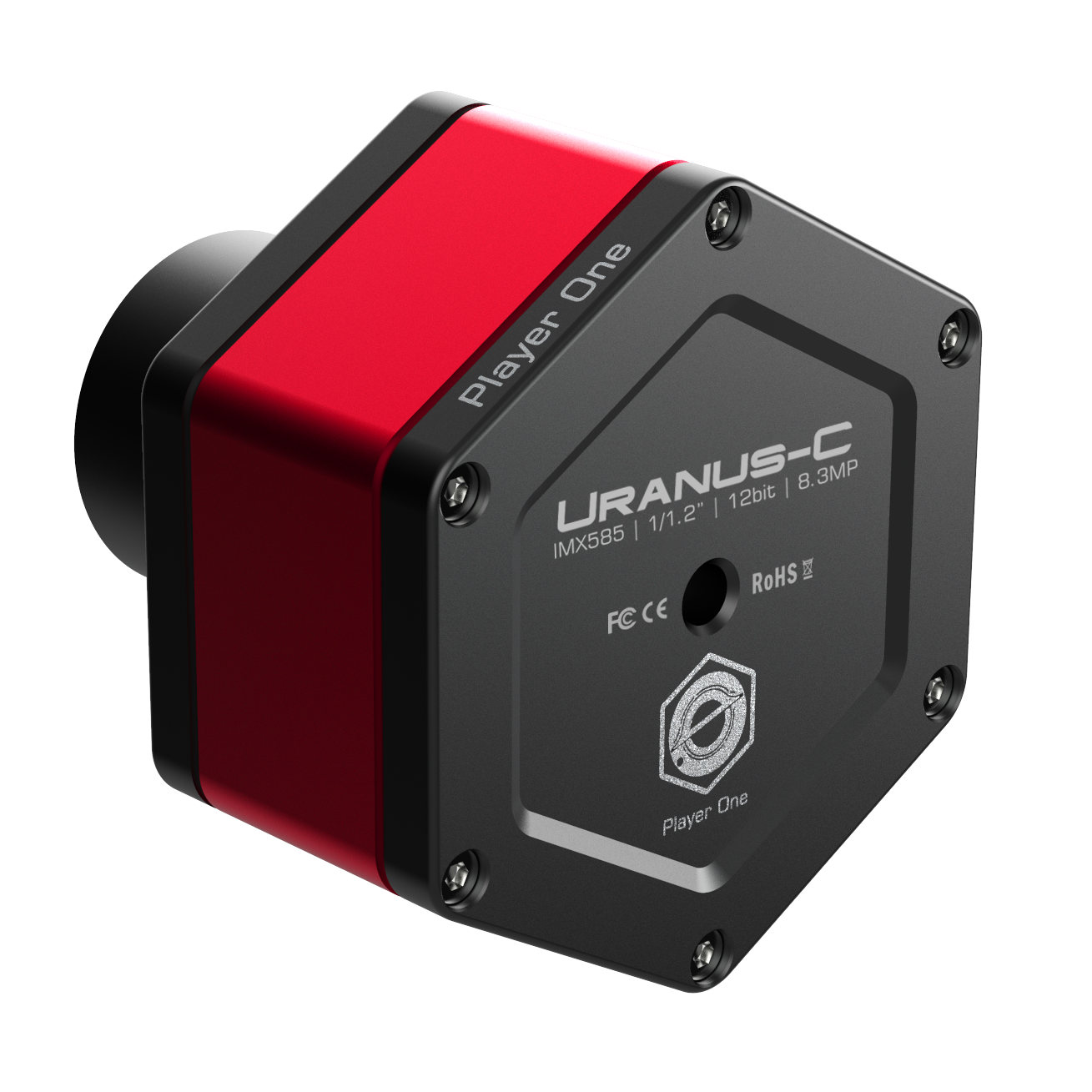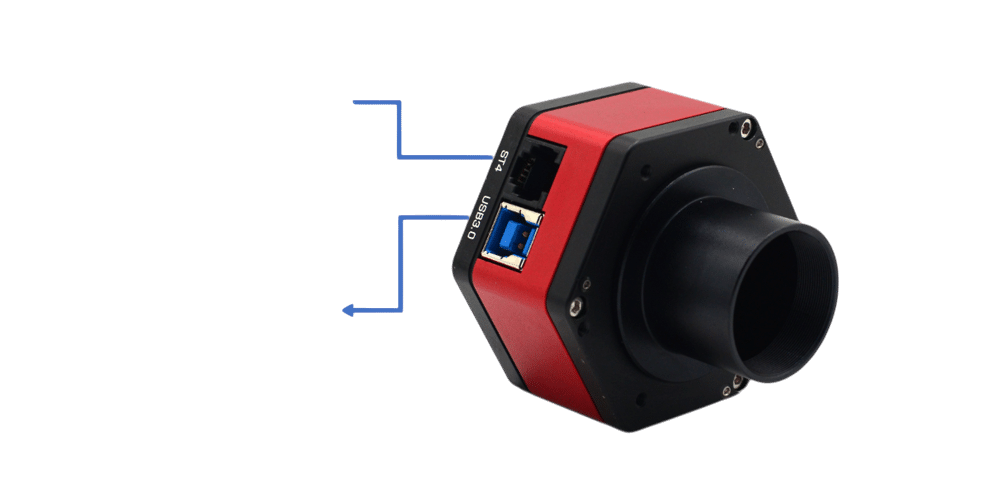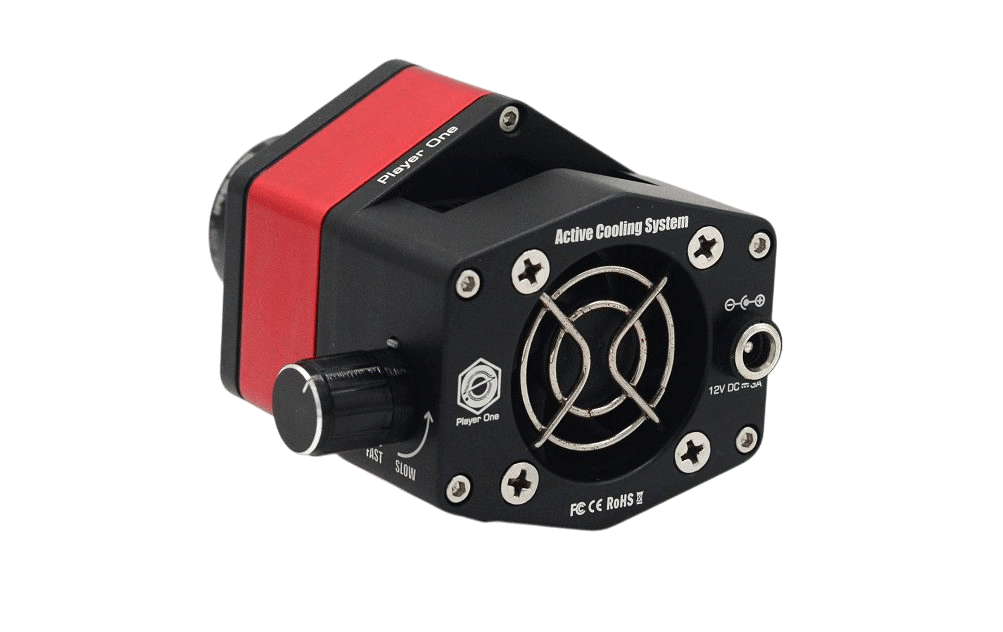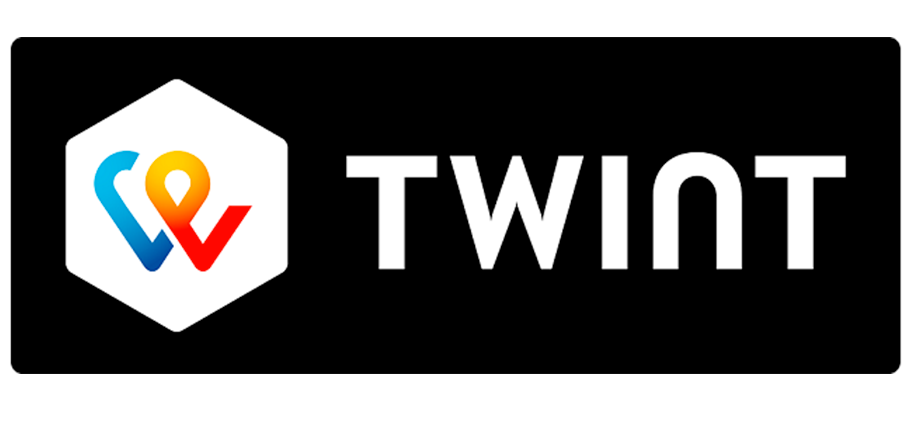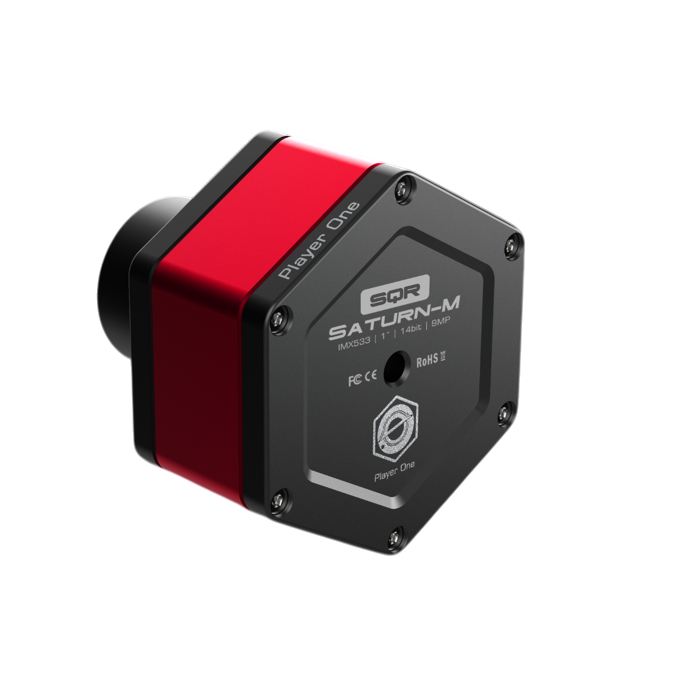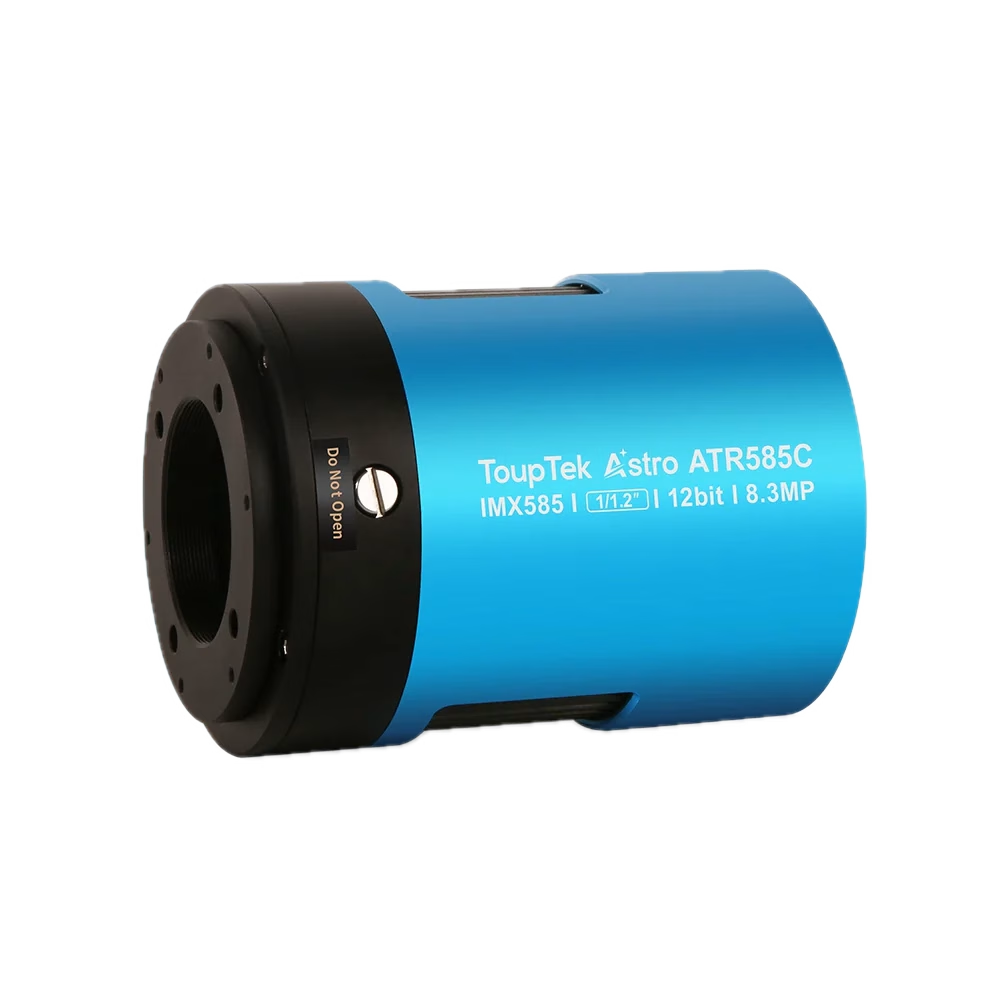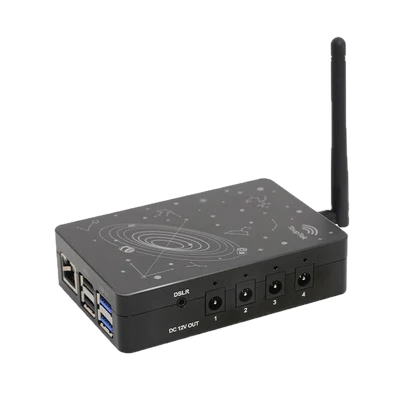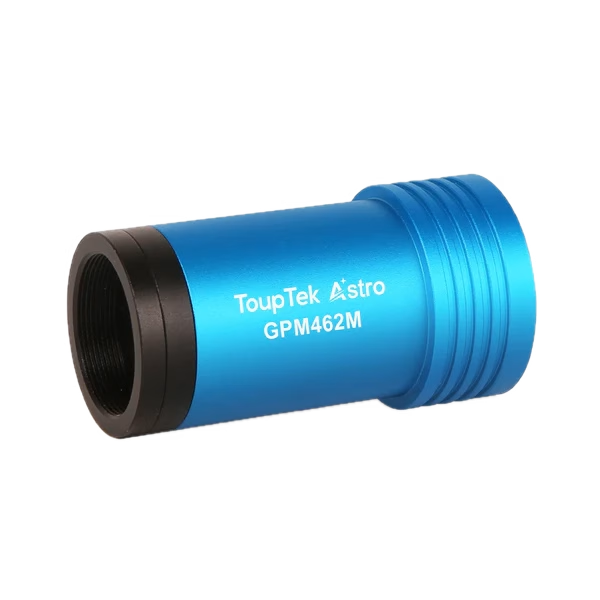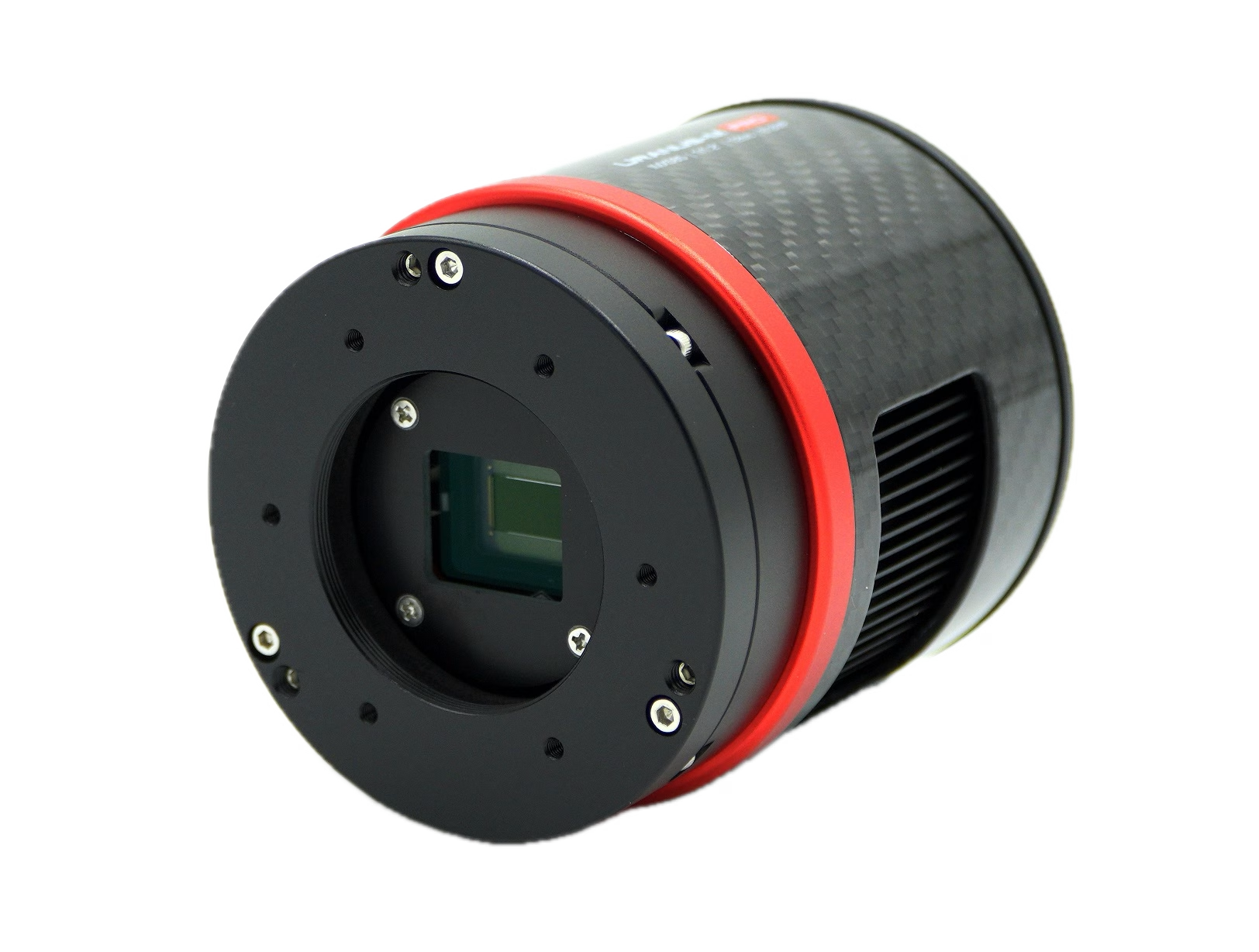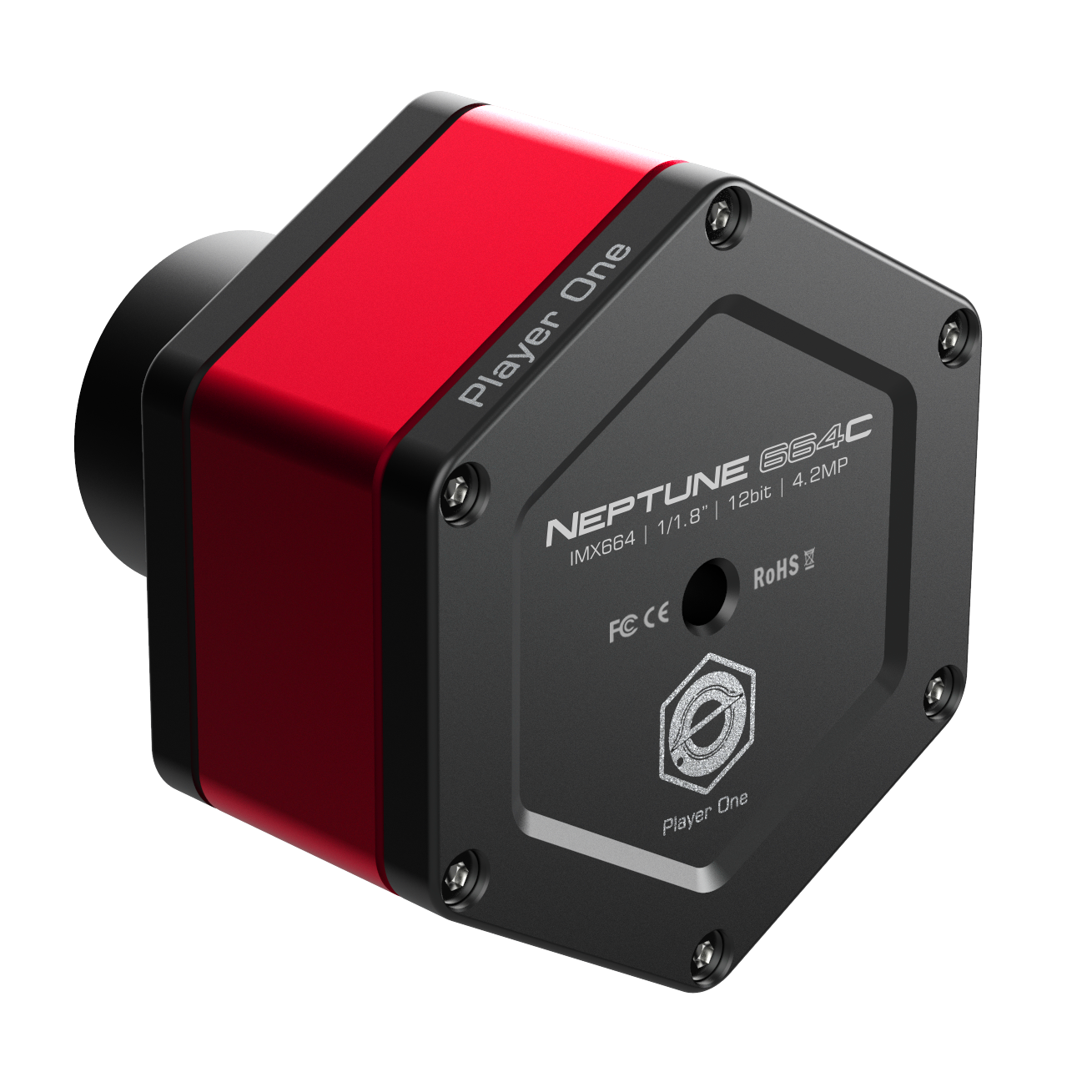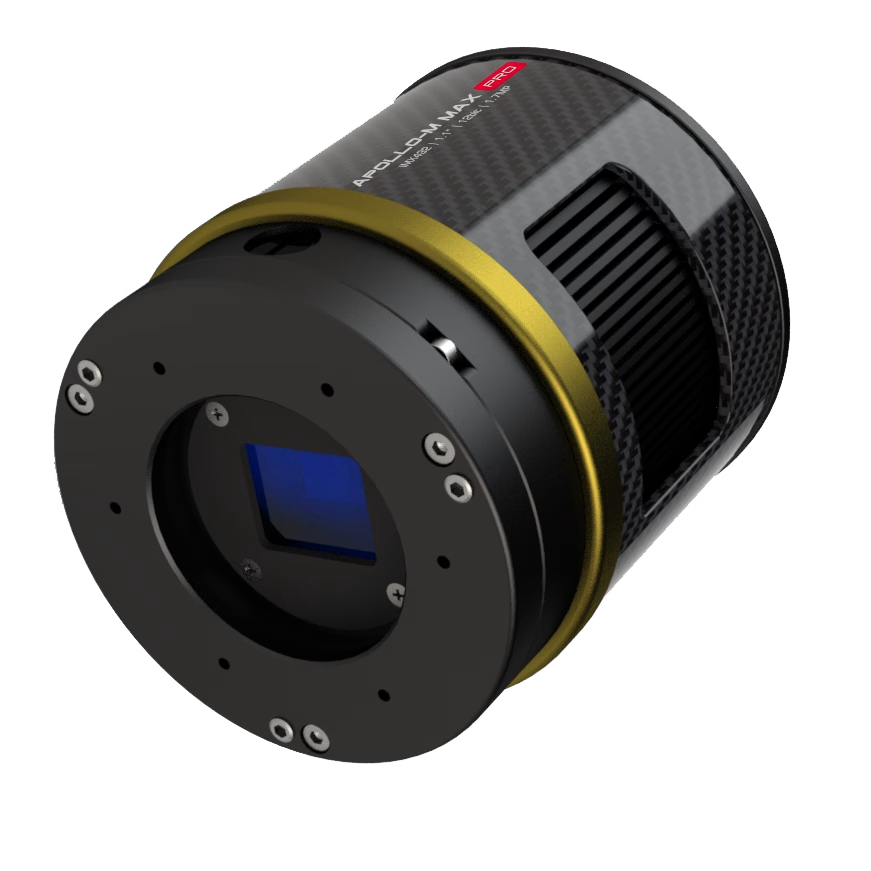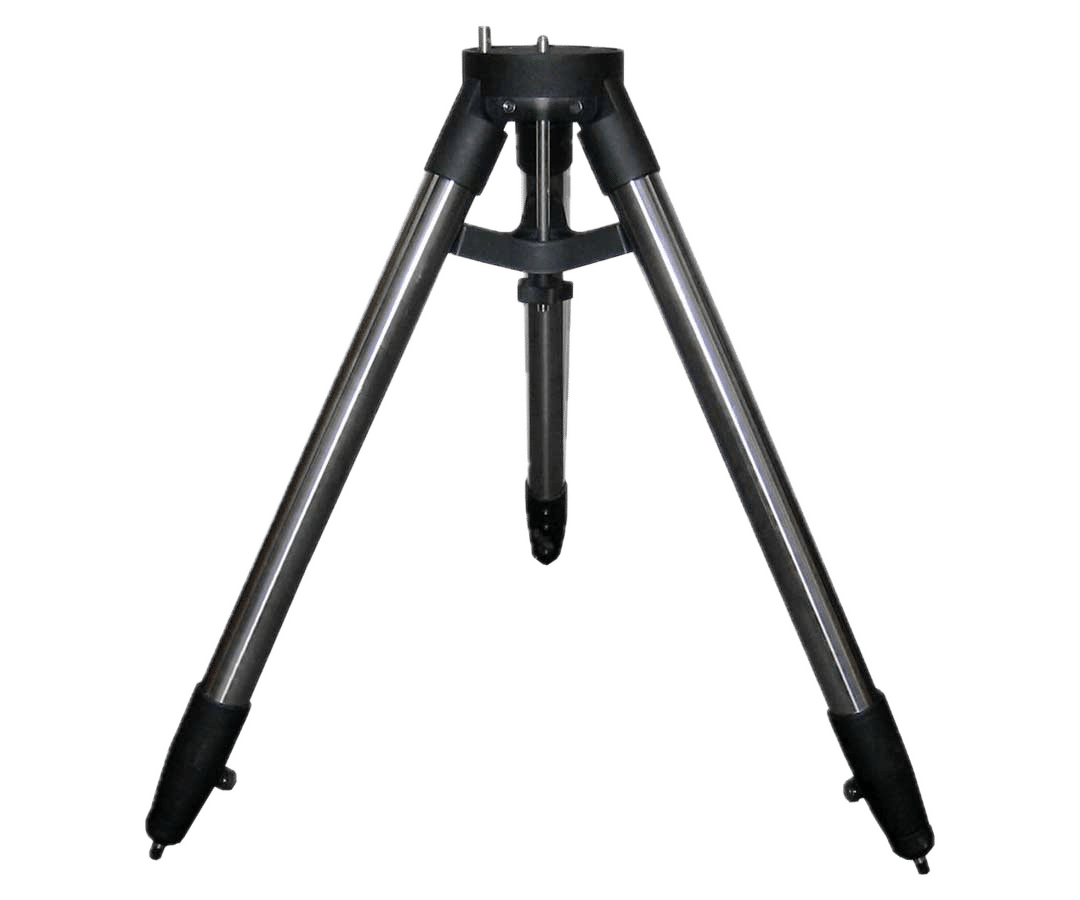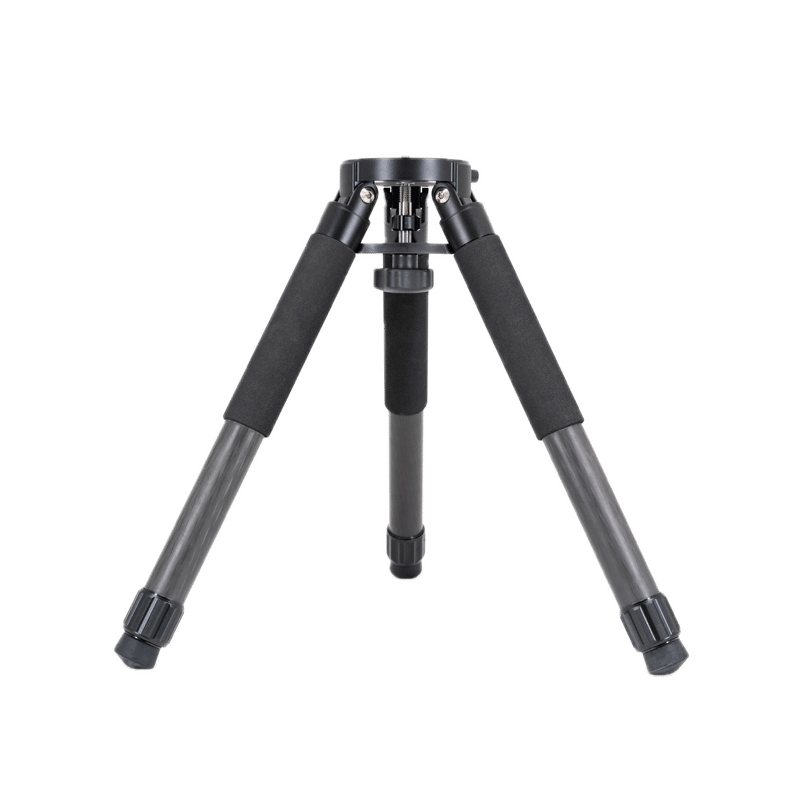Player One Uranus-M (IMX585) - my do-it-all mono camera for planetary, EAA and lucky imaging
The Uranus-M is the monochrome version based on the Sony IMX585 sensor in 1/1.2″ format. It's a rare combo: highly sensitive modern STARVIS 2 sensor, 8.3 useful MP (3856×2180), 2.9 µm pixels, very deep charge well (~47 ke-) and above all a dark perfectly clean (zero amp-glow). In practice: it's fluid for high-frame-rate planetary, formidable in EAA, and surprisingly comfortable for fast deep-sky lucky imaging.
Why I recommend it
- Sensitivity + dynamics STARVIS 2 in back-illuminated, 47 ke- well and peak QE around ~91 % to make the most of your narrow filters.
- No amp-glow clean sky background, simpler stacking and shorter processing times.
- High speed up to ~47 FPS at full resolution (RAW8), and much more in ROI to freeze turbulence.
- 256 MB DDR3 buffer stable transfers, fewer lost images, even over USB 2.0 if required.
- Meticulous mechanical control : 2ᵉ generation tilt plate (front/rear) to round out stars on the field and integrated blackout foam against lateral leakage.
- Intelligent thermal management The latest technology: body with passive dissipation (PCS) and the option of adding ACS (active air cooling) to stabilize temperature during long sessions.
- Integrated safety overvoltage/overcurrent protection to protect the camera and the rest of the setup.
Usage scenarios (concrete)
- Planetary/high-resolution Tight ROI on Jupiter/Saturn/Moon, frame rates >100 FPS at 2560×1440 and much higher at smaller ROI.
- EAA live stacking of short exposures, clean background without amp-glow, fine stars thanks to 2.9 µm pixels.
- Lucky imaging deep sky 1-10 s exposure bursts on globular clusters, bright NPs, compact galaxies.
- Solar/Hα (with suitable filtration) High sensitivity for high flow rates and contrast of protuberances.
What this means for treatment
- Less time spent correcting gradients and amp-glow artifacts; "cleaner" stacks right out of pre-processing.
- More latitude to push the stretch thanks to a high load well and very low reading noise (down to ~0.7 e-).
- The tilt plate reduces perceived field curvature: stars are better held in corners with fast optics.
Key features
| Parameter |
Value |
| Sensor |
Sony IMX585, 1/1.2″, mono, BSI STARVIS 2 |
| Resolution |
8.3 MP - 3856 × 2180 |
| Pixel size |
2.9 µm |
| Diagonal |
12.85 mm (zone 11.2 × 6.3 mm) |
| Load wells |
~47 ke- |
| QE (peak) |
≈ 91 % |
| Playback noise |
~6.5 → 0.7 e- (depending on gain, HCG at ~210) |
| Shutter |
Rolling shutter |
| ADC |
12 bit (RAW8/RAW16 outputs in software) |
| Max. frame rate (full resolution) |
≈ 47 FPS (RAW8, USB 3.0) |
| Fast windowing (examples) |
3840×2160 ~47 FPS - 2560×1440 ~105 FPS - 1920×1080 ~187 FPS - 1280×720 ~286 FPS - 640×480 ~418 FPS |
| Interface |
USB 3.0 (USB 2.0 compatible) |
| Adaptation |
1.25″ nose / M42×0.75 thread (T2) |
| Mechanical backfocus |
~12.5 mm |
| Protective window |
D32×2 mm, multi-layer AR Plus |
| Diameter / Weight |
Ø 66 mm / ~160 g |
| Exhibitions |
~32 µs to 2000 s |
| Buffers & protections |
DDR3 256 MB, integrated OVP/OCP |
Recommended accessories (in my experience)
- ACS - Active Cooling System air-cooling module to be added to the PCS to stabilize temperature (useful for solar, EAA or deep-sky lucky imaging).
- 1.25″ / 31 mm unmounted filters 2.9 µm fine sampling enhances the value of high-quality narrow SHO/LRGB filters.
- Compact filter wheel/drawer rapid L/Ha/OIII/SII shift to planetary HR lunar and NP.
- Fast SSD for high-speed RAW recording.
Software & driver compatibility
Drivers and software are supplied by Player One; the camera works with popular capture suites via dedicated drivers (see "Drivers & Software" page). Always install the latest versions before using the camera for the first time.
Start-up tips
- Activate HCG mode (~gain 210) to minimize playback noise while maintaining usable dynamics.
- Use ROIs adapted to the apparent size of the target: smaller = faster = more "clean" images to sort.
- On tripod/light mount, keep the optical train compact: 1.25″ nosepiece, short filter drawer and thin rings to stay close to 12.5 mm backfocus.
- In EAA, avoid saturation: wells of 47 ke- = margin, but keep a balanced histogram for colours/contrast specific to the live stack.
What's delivered (typical)
- Uranus-M (IMX585) mono camera
- USB 3.0 cable
- Standard plugs & adapters (1.25″ / T2)
- Documentation (driver & manual links)
In a nutshell
If you're looking for a modern, fast, sensitive, amp-glow-free mono, the Uranus-M ticks all the boxes. It simplifies processing, delivers impressive frame rates and offers rare flexibility: pure planetary, comfortable EAA and lucky deep-sky imaging... all with the same camera. It's exactly the kind of product I like to offer: high-performance, consistent and designed for real nights.

